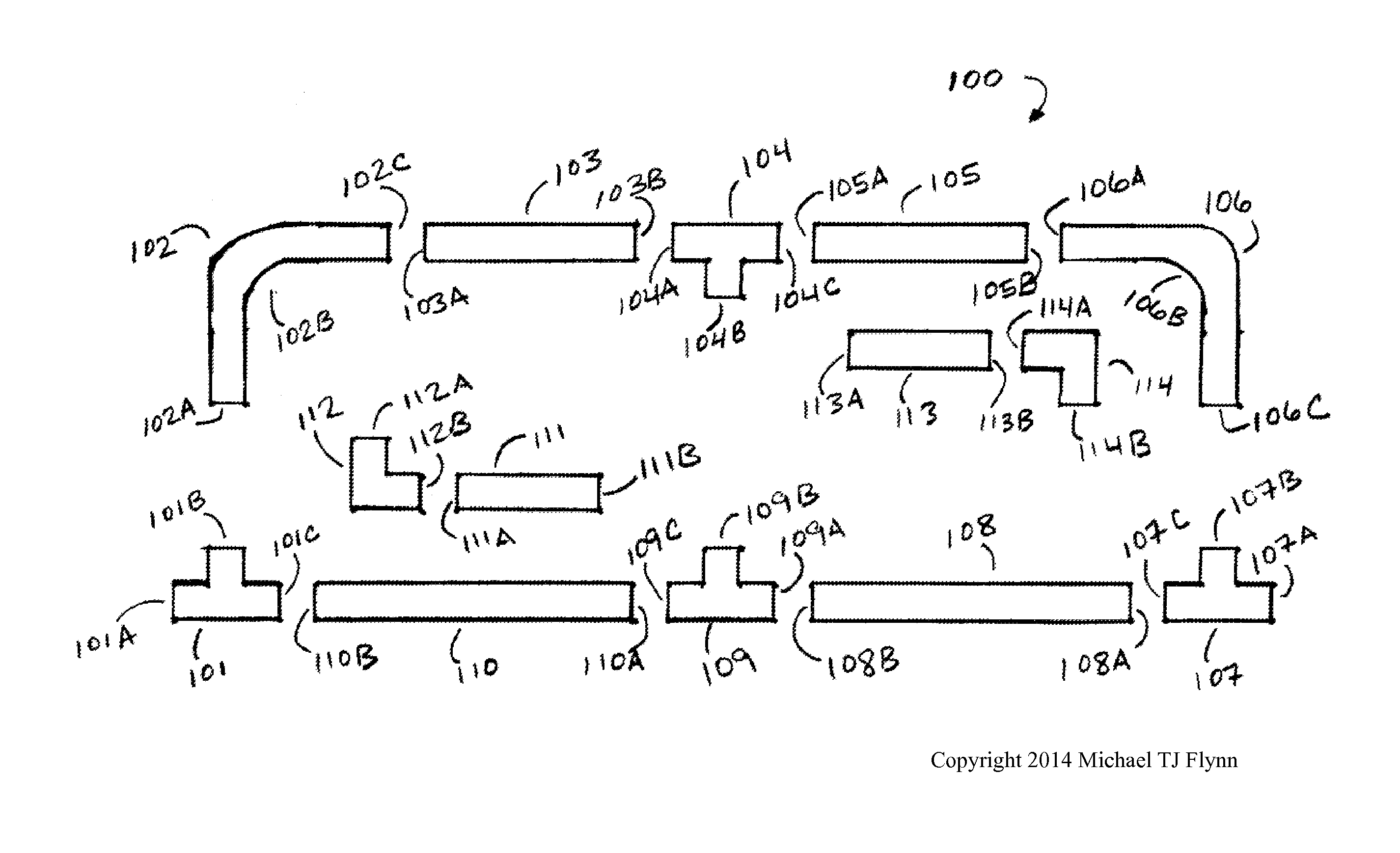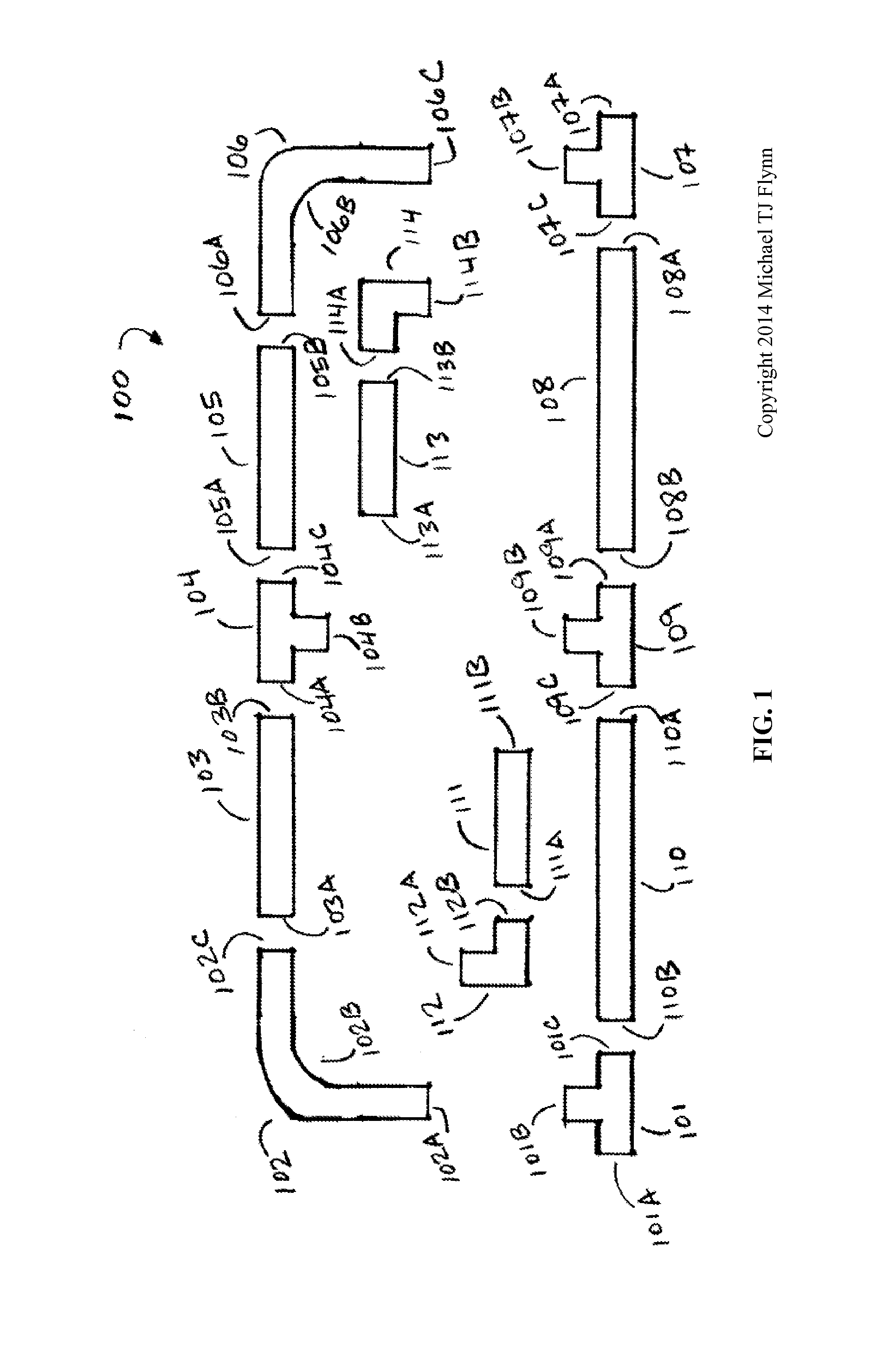Within the field there exist problems that may be ripe for solutions.
A first problem is associated with systems of embodiments that often have an inherent challenge that minimally may limit the
environmental setting where a user is able to utilize an apparatus, from which an embodiment is formed; e.g. indoor versus outdoor.
Thus when a user engages such a
machine on a pleasant weather day, the user is limited, if not prevented, from easily moving such an apparatus from its indoor setting to the outdoors, thus causing a user to sacrifice either the enjoyment of the outdoors or the
continuation of use of the apparatus.
Conversely if an apparatus is set in an outdoor environment and is bulky, secured in place, or otherwise unable to be moved indoors then a user compromises or even looses the indoor setting benefits of such a device, particularly if inclement weather is present.
Persons with allergies to pollens, or sensitivity to
sunlight, or fear of
bird droppings overhead, or fear of potential bee-stings, or other challenges to nature's outdoor environment, e.g. freezing or sizzling temperatures,
high humidity or rainstorms may alter or cease an outdoor
regimen for a user; negatively impacting the user's health fitness routine, particularly when the user may desire use of an outdoor apparatus to become an indoor apparatus but is unable to make it so.
The weight of an apparatus is a primary challenge to the world of users of embodiments that are limited to a particular indoor or outdoor setting.
The heavier an apparatus is the greater limitations are placed upon a single user efficiently moving the apparatus.
Thus there exist challenges of an embodiment being portable and weighty regarding an apparatus.
Furthermore, systems of embodiments have a physical setting issue that may impose limitations upon a user.
In the busy schedule of many societies there is a challenge of
time efficiency for people.
Thus when a person uses two or more physical locations of existence / operations, e.g. at the
residence and / or at the workplace, it is obvious that it is impossible to be at both places simultaneously.
If a person desires to maintain a routine that involves an embodiment of an apparatus, but fails to bring that apparatus with them to their current physical setting then that person would lack the benefit of having the apparatus with themselves and by default would also lack the benefit of using such apparatus.
Unfortunately, often apparatuses are specialized and thus require multiple devices to cover a multiple of purposes for which apparatuses would serve.
Additionally, when an apparatus embodiment is not portable it certainly would not be more easily trans-portable between two physical locations, such as between a
residence and a workplace.
The challenge of an apparatus that is difficult to move from one room to another, or from an indoor setting to an outdoor setting would create an even greater challenge to be moved from a
residence to the workplace, and back again; certainly on a regular basis.
Thus there exist challenges of embodiments being a single-unit and easily transportable regarding an apparatus.
Moreover, systems of embodiments have a geographical location that may be limited upon a user.
This absence places a hardship upon a user of the embodiment because, lacking the ability of bilocation, the user and the user's embodiments often remain geographically distant from each other; denying the user any practical benefit thereto.
This geographical location limitation is dependant upon the user's ability to easily re-locate the apparatus, especially when an apparatus would be used on a regular, weekly, if not daily, basis.
Often the apparatuses involved in the fields of
physical exercise, or intellectual activity, or amusement fields fail to be compactly designed for storage and / or transportation; thus compounding the location limitation challenges.
Moreover, if compactness does exist there may also be the issue of durability of the embodiment.
Devices that often are associated with the fields, supra, are by design, or by default, fragile, breakable, sensitive to
moisture, temperature and otherwise; creating in apparatuses a
wear and tear or decay lifespan; lacking durability.
Thus there exist challenges of compactness and durability regarding an apparatus.
Moreover, systems of embodiments may have a financial restriction that may be limiting upon a user.
While cities expand and residences continue to spiral away from city centers there often become an increasing distance between members in a society and a gym; making access to the gyms not readily available.
Furthermore, while the actual distance to a gym may be decreased by a growing number of gyms, there is also a growing number of traffic issues that
delay arrival / departure times to access the gym.
While a person may choose to attain their own gym-styled apparatus for private use, often times this may become cost prohibitive and thus again separates a user from an apparatus availability.
Either method, i.e. gyms, or private ownership, requires an outlay of financial resources from the members of society; ultimately reducing an individual's financial positive balance sheet.
Often, the market will adjust the price of gym fees and / or cost of goods for private ownership, however, there will always remain an ever growing sector of society that is either financially disadvantaged from having the financial resources to maintain monthly gym fees and / or place an outlay of cash for private apparatus purchases.
Furthermore, gym locations require time and more financial resources to travel to / from.
Thus there exist challenges of an embodiment being readily available, and expensive regarding an apparatus.
A second problem is associated with methods of use of embodiments that often arise from the wide array of purposes for which an apparatus is made.
Too often an apparatus and its method was made for a single purpose and failed to
cross over into other uses within the same field, and / or alternative fields.
Thus there exist challenges of methods of use of embodiments that are separate from the vast array of apparatuses available to a
consumer.
A third problem is associated with systems and methods in a single-unit apparatus that often arise from a lack of creating efficiency among objects and methods thereof.
While a weight set to serve
physical fitness, and a book support device to serve intellectual activity are readily available, there is very little, if any, apparatus
system, and / or method thereof, whereby these two disciplines, i.e. exercise and study, are united within one and the same apparatus.
Thus there exist challenges with systems and methods in a single apparatus available to a
consumer.
A fourth problem is associated with physical exercise that often arise from a lack of a unique apparatus, and / or method thereof, that is capable of uniquely dealing with the multiple disciplines and modalities in the
physical fitness field.
Many physical injuries result from improper warm up, stretching.
While
recovery and
rehabilitation from an injury, or simple toning, even
muscle building may be a goals of a person, too often there lacks discipline for the user to have a single-unit apparatus, or embodiment thereof, whereby a user is provided not only a system but also a method thereto.
Thus there exist challenges within the field of physical exercise to meet the needs of the
population in an efficient manner.
A fifth problem is associated with the assembly processes for an embodiment of an apparatus.
The former method, even if engineered for a long lifespan of use / reuse, may have risk factors that exist outside of the piece itself, yet potentially imposing a failure status to the embodiment during the assembly process.
These risks include
premature failure, excessive
wear and tear, loss, altered surfaces making the attaching-piece incompatible, e.g. stripped or crossed threads, misaligned contact points.
Thus there exist challenges associated with the assembly processes for an embodiment of an apparatus.
A sixth problem is associated with the disassembly processes for an embodiment of an apparatus.
Thus disassembly becomes impossible, at least, for any
reusability purpose.
Alternatively when a reusable attaching-pieces method, supra, is used for assembly which should also provide the ability of disassembly, there requires time, effort, potential expense of replacement for compromised, or lost attaching-pieces, as well as other potential associated risks, supra; making disassembly arduous upon the user; limiting or even eliminating the potential for re-assembly of the embodiment.
Thus there exist challenges associated with the disassembly processes for an embodiment of an apparatus.
A seventh problem is associated with intellectual activities associated with an embodiment of an apparatus.
Mostly apparatuses are engineered for a specialized use and fail to have a carry-over to other fields of endeavor.
However, these latter methods of use were not intrinsically, nor intentionally, engineered into the system or method of the free-weight manufacturing.
Thus there exist challenges with intellectual activities associated with an embodiment of an apparatus; minimally having an intended cross-over purpose, and / or
dual purpose capability within the assembly / disassembly process, and / or a limited
reusability feature.
In an ever increasing hectic global and time-zone-less era, peoples' many-times
chaotic schedules result in
high stress, and strenuous
exertion, taxing nearly every
fiber in the human physiological makeup; resulting in health challenges that range from strokes, cardiac arrest,
nutrition disorders, to psychological challenges,
substance abuse and a plethora of societal mishaps effecting nearly all sectors and
age groups in society.
But, this was not engineered into the hula hoop, or its methods of use.
Thus, although the hula hoop may arbitrarily include multiple purposes, enhancing physical exercise, support to an intellectual activity and amusement, it, like many other amusement apparatuses, was not so engineered or methodized.
This factor makes amusement embodiments less desirable, certainly for frequent accompaniment between a residence and workplace.
Thus there exist challenges associated with amusement with an embodiment of an apparatus.
 Login to View More
Login to View More  Login to View More
Login to View More 


